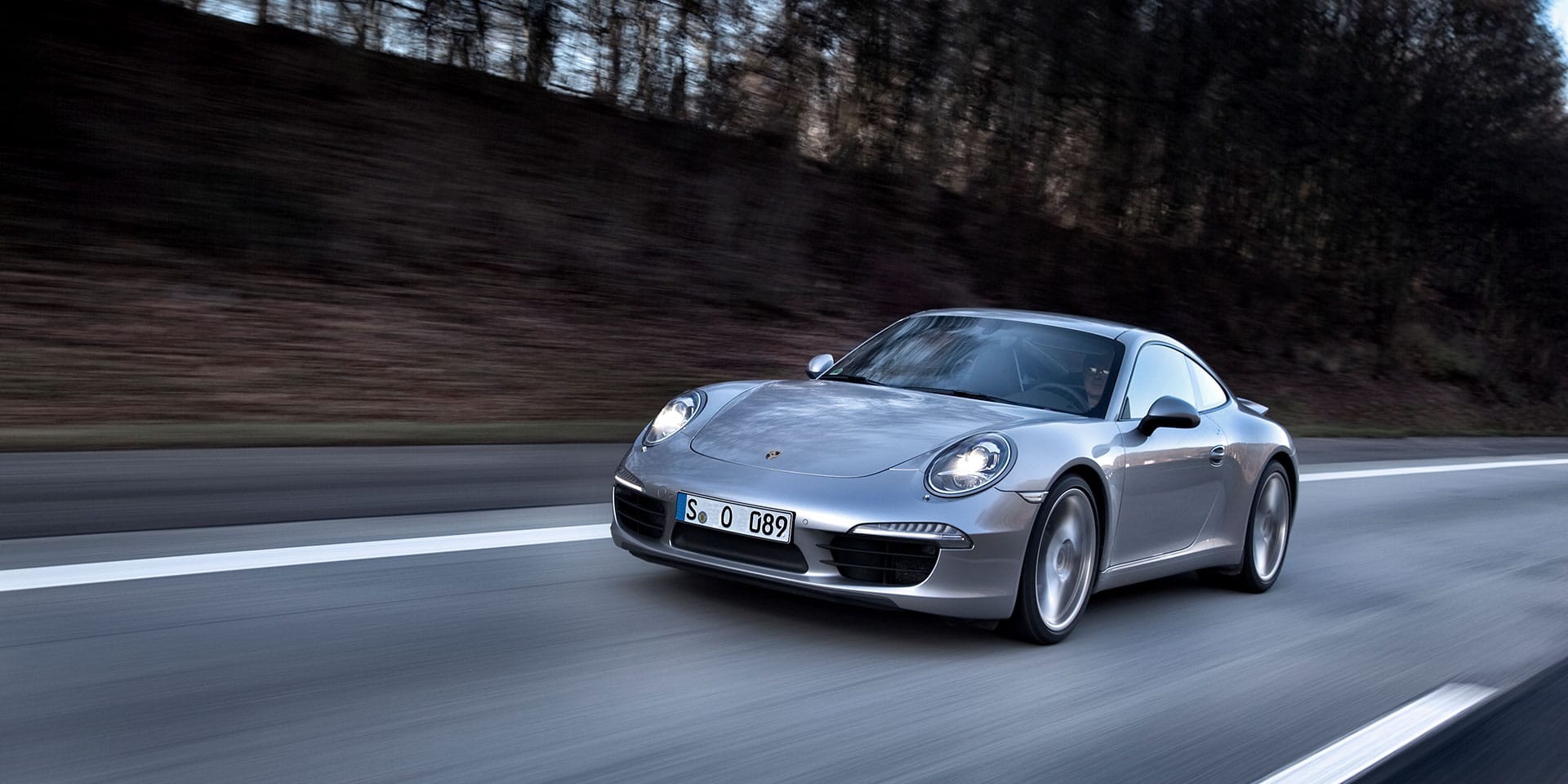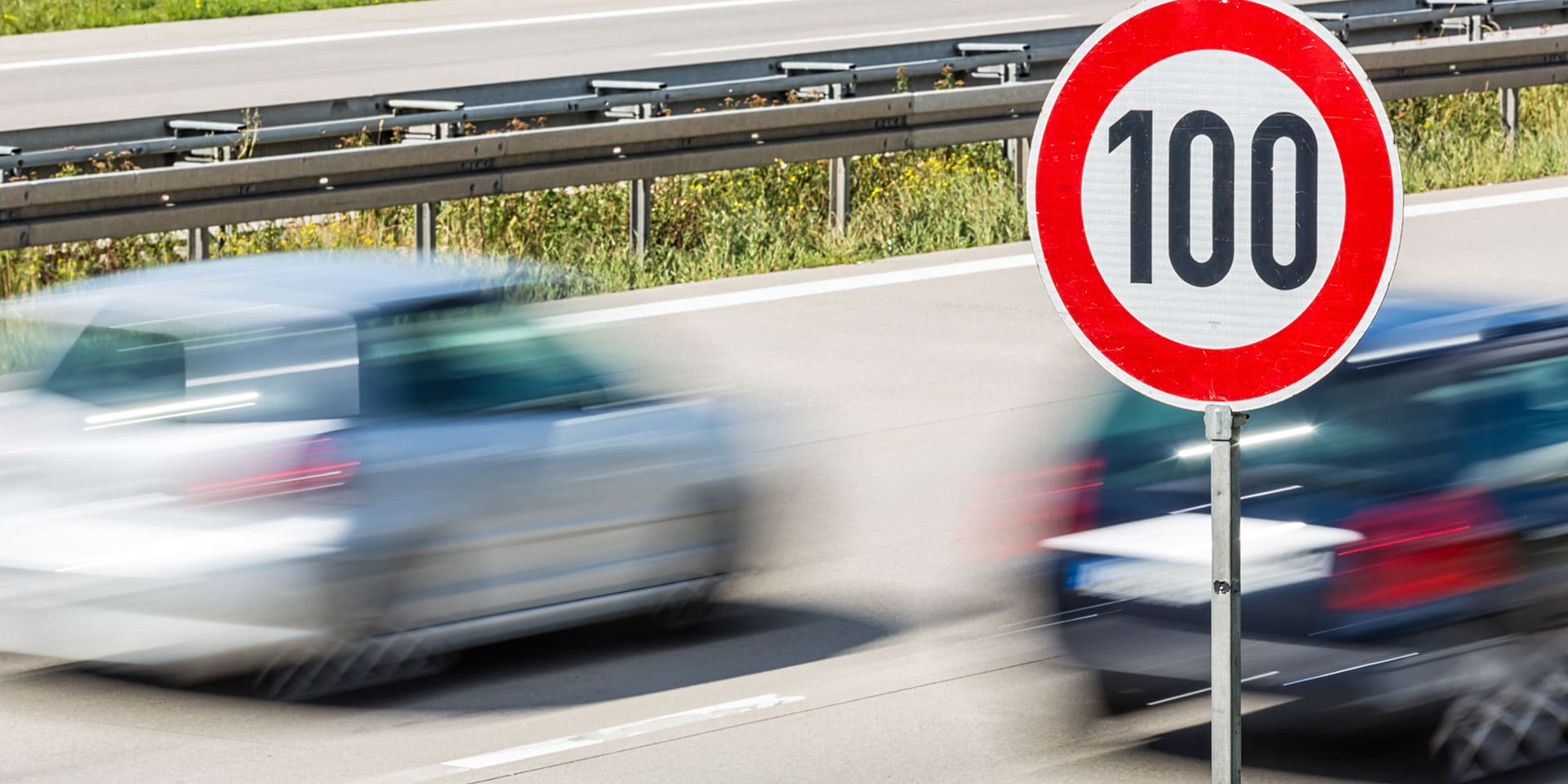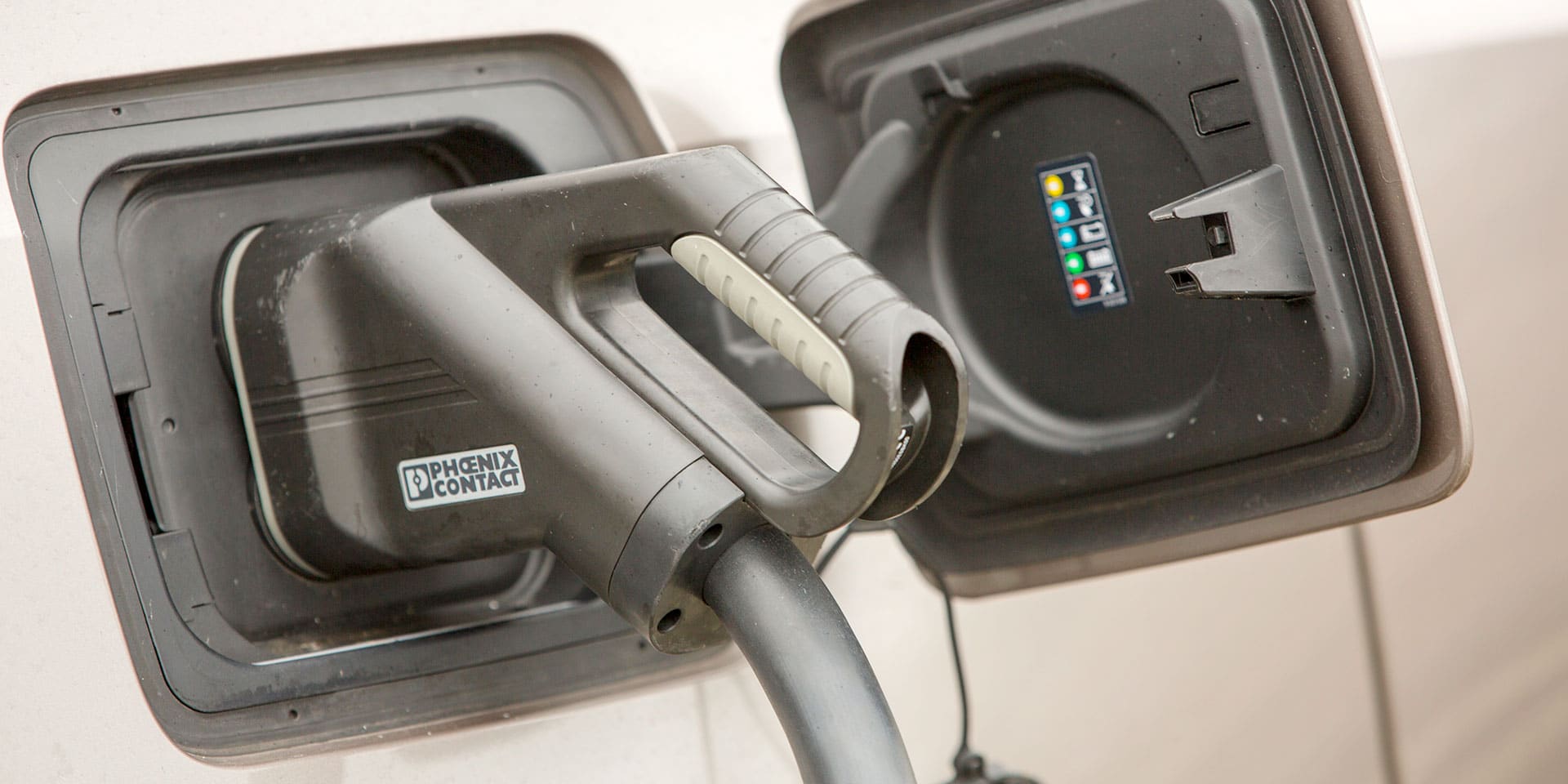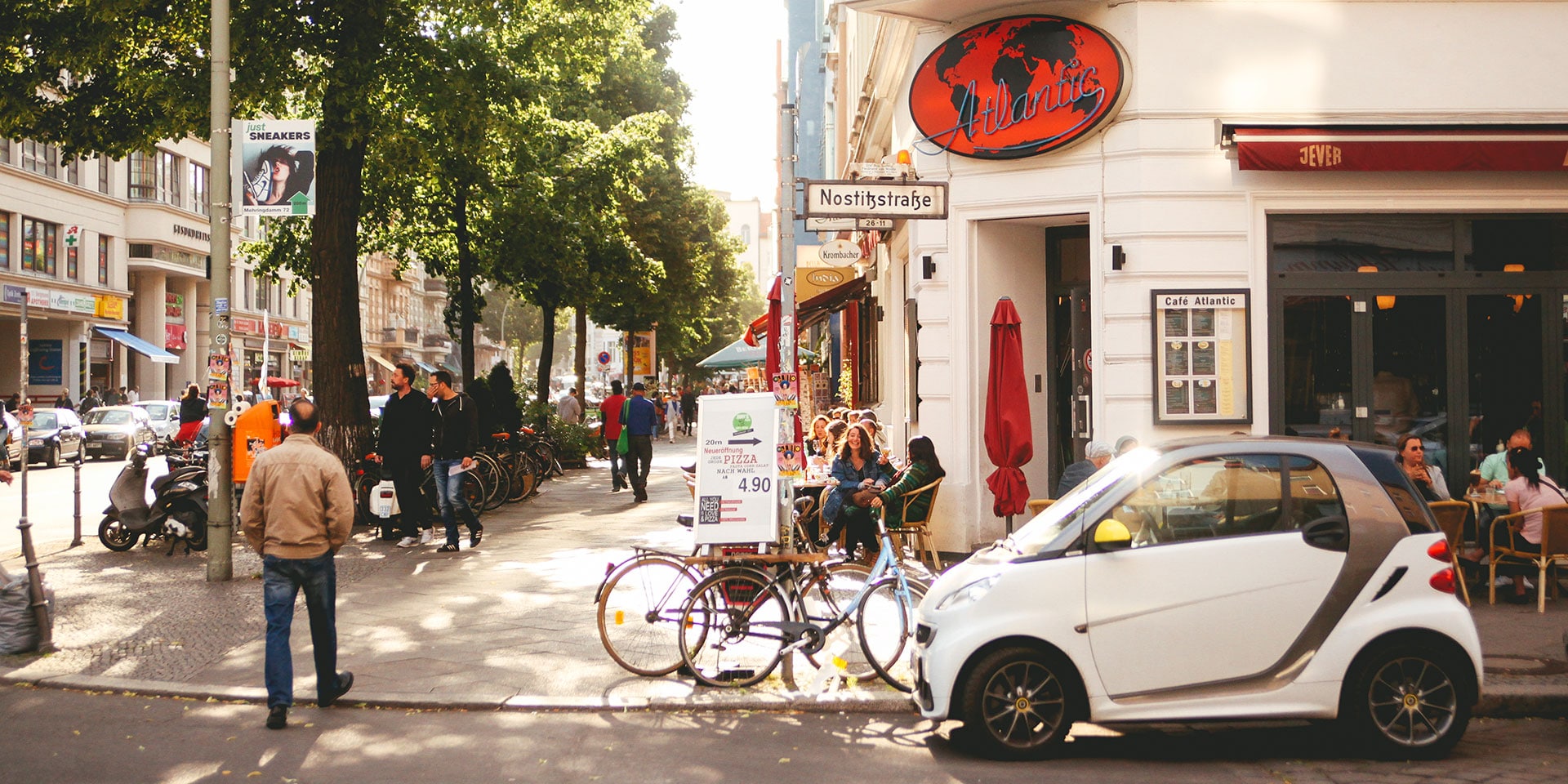
Will you give into the need for speed on the German autobahn? (Photo: Getty Images)
Tips + Trends6 Tips for Surviving a Road Trip on Germany’s Famous Autobahn
By Meredith BethuneIt’s obvious you’ve crossed the border into Germany when driving along European highways. A welcome sign isn’t even necessary. Suddenly, Audis, BMWs and the occasional Porsche roar by at speeds over 100 miles per hour. You’ve entered the German autobahn — the federal highway system notorious for having no speed limit (which isn’t entirely true, as you’ll see).
Although it’s every gearhead’s dream to take a spin on the autobahn, it’s not all that different than highway driving in the U.S. American interstates were originally modeled after the German system, so there are plenty of similarities — expect two to four lanes and a shoulder, with slower traffic on the right and fines for tailgating.
The biggest difference, of course, is the lack of speed limits throughout much of the autobahn.

The German capital of Berlin would be the ideal road-trip starting point. Although it’s a big city, the wide boulevards make it surprisingly easy to drive and park there. Plus it’s practically smooth sailing from the Benelux countries (Belgium, the Netherlands and Luxembourg) to Berlin along the Bundesautobahn 2 once you break through the cluster of cities running along Germany’s western border.
Roads are well-marked, but using an app like Google Maps remains the best way to navigate. Get an international data plan for your phone before the trip.
Here are some other tips to keep in mind:
Spring for a Fancy Rental Car
This isn’t the time to save a few bucks on an economy model. Almost any other time, the smallest (and least expensive) rental car is the best choice for driving on Europe’s narrow roads, but you’ll need something fancier than a Peugeot or an Opel to keep up with the fastest speeds on the autobahn. These tiny cars often start shaking when you exceed the recommended speed of 130 kilometers per hour (about 81 mph) on the autobahn. Preferably, rent a vehicle like a BMW or Mercedes-Benz with six cylinders.

Learn How to Open Your Gas Tank
You’ll need to fuel up at some point because stopping on the autobahn’s shoulder for any reason (including running out of gas) is illegal and will earn you a hefty fine. So before leaving the car rental lot, ask one of the company’s staff to show you how to open your gas tank. It’s bound to save you time and confusion when you go to pump gas because some European models can be a little quirky. For instance, sometimes the key must be in the passenger seat’s door to unlock the cap.
Learn to Say Numbers in German
No, you don’t need to learn all of them, but at least practice saying numbers one through ten. German gas pumps don’t typically have credit card readers attached. That means you’ll need to go inside and tell the cashier the number of your pump to pay by credit card or with cash.
Start Collecting Coins
Germany’s rest stops are plentiful. They’re very similar to those in the United States except the bathrooms are impeccably clean. There’s a reason for this — there’s almost always a bathroom attendant, and this convenience comes at a price. Except to pay about 50 euro cents per person per bathroom visit. Usually you just leave a coin on a dish, but sometimes you have to feed exact change into a machine attached to a turnstile. Make sure you have plenty of change so everyone in your car can use the facilities.
Watch for Posted Speed Limits
Contrary to popular belief, the autobahn is not totally and completely free of speed limits. Look out for changing speed limit signs posted above the road that appear in the more populated areas. Police presence is rare, but cameras regularly catch speeders and fine them. There’s usually plenty of warning in advance to slow down.
Stay Far Behind the Cars in Front of You
Except for the thrill it gives you, driving over 100 miles per hour in Germany isn’t much different than driving 70 miles per hour back home. But remember to keep as much distance as possible between you and the car in front of you. That way you’ll avoid an accident if the car in front of you suddenly brakes while you’re driving at a highspeed.







